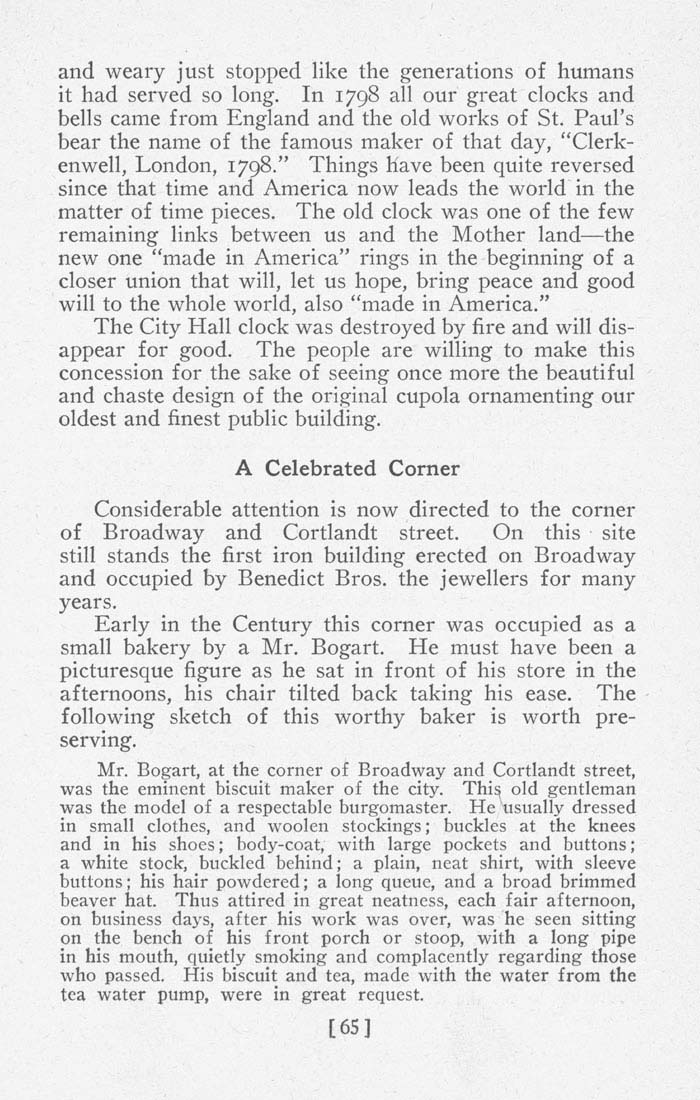and weary just stopped like the generations of humans
it had served so long. In 1798 all our great clocks and
bells came from England and the old works of St. Paul's
bear the name of the famous maker of that day, ''Clerk-
enwell, London, 1798." Things have been quite reversed
since that time and America now leads the world in the
matter of time pieces. The old clock was one of the few
remaining links between us and the Mother land—the
new one "made in America" rings in the beginning of a
closer union that will, let us hope, bring peace and good
will to the whole world, also "made in America."
The City Hall clock was destroyed by fire and will dis¬
appear for good. The people are willing to make this
concession for the sake of seeing once more the beautiful
and chaste design of the original cupola ornamenting our
oldest and finest public building.
A Celebrated Corner
Considerable attention is now directed to the corner
of Broadway and Cortlandt street. On this site
still stands the first iron building erected on Broadway
and occupied by Benedict Bros, the jewellers for many
years.
Early in the Century this corner was occupied as a
small bakery by a Mr. Bogart. He must have been a
picturesque figure as he sat in front of his store in the
afternoons, his chair tilted back taking his ease. The
following sketch of this worthy baker is worth pre¬
serving.
Mr. Bogart, at the corner of Broadway and Cortlandt street,
was the eminent biscuit maker of the city. Thi^ old gentleman
was the model of a respectable burgomaster. He usually dressed
in small clothes, and woolen stockings; buckles at the knees
and in his shoes; body-coat, with large pockets and buttons;
a white stock, buckled behind; a plain, neat shirt, with sleeve
buttons; his hair powdered; a long queue, and a broad brimmed
beaver hat. Thus attired in great neatness, each fair afternoon,
on business days, after his work was over, was he seen sitting
on the bench of his front porch or stoop, with a long pipe
in his mouth, quietly smoking and complacently regarding those
who passed. His biscuit and tea, made with the water from the
tea water pump, were in great request.
[65]
|








